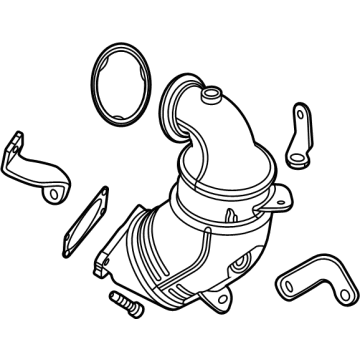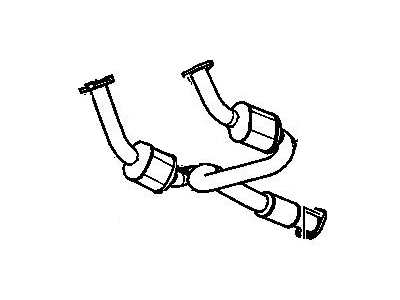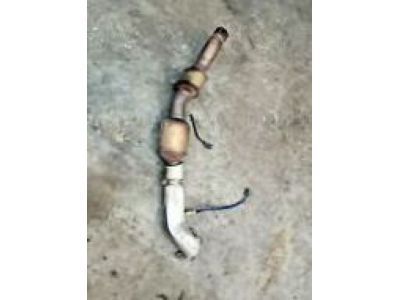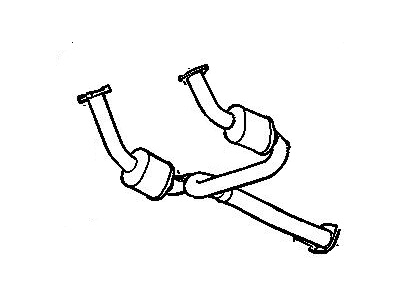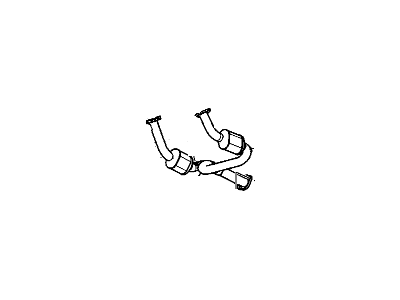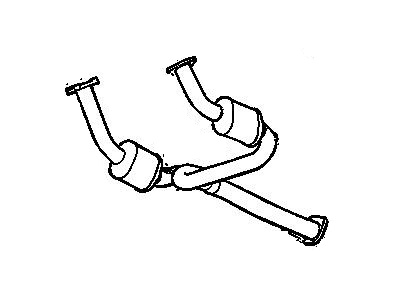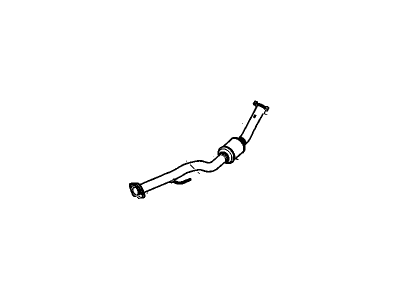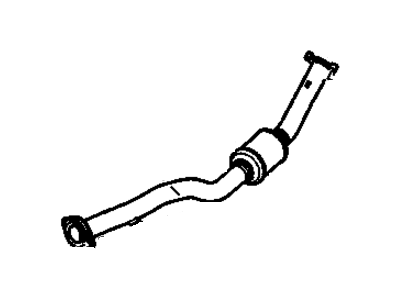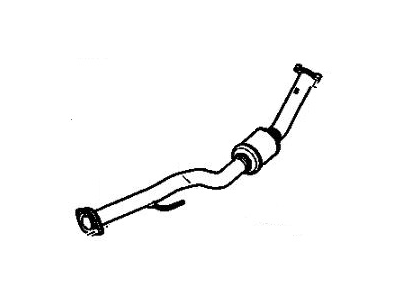My Garage
My Account
Cart
Genuine Chevrolet Trailblazer Catalytic Converter
Cat. Converter- Select Vehicle by Model
- Select Vehicle by VIN
Select Vehicle by Model
orMake
Model
Year
Select Vehicle by VIN
For the most accurate results, select vehicle by your VIN (Vehicle Identification Number).
21 Catalytic Converters found
Chevrolet Trailblazer Converter Assembly, W/Up 3Way Ctltc
Part Number: 12709243$369.60 MSRP: $554.95You Save: $185.35 (34%)Ships in 1-3 Business DaysChevrolet Trailblazer 3Way Catalytic Convertor Assembly (W/ Exhaust Manifold P
Part Number: 15808213$1208.33 MSRP: $1809.85You Save: $601.52 (34%)Ships in 1-3 Business DaysChevrolet Trailblazer Converter Assembly, W/Up 3Way Ctltc
Part Number: 12705331$368.37 MSRP: $549.95You Save: $181.58 (34%)Chevrolet Trailblazer Converter Assembly, W/Up 3Way Ctltc
Part Number: 55515139$1180.57 MSRP: $1767.97You Save: $587.40 (34%)Ships in 1-3 Business DaysChevrolet Trailblazer CONVERTER ASM-W/UP 3WAY CTLTC
Part Number: 25204734$374.90 MSRP: $562.92You Save: $188.02 (34%)Ships in 1-2 Business DaysChevrolet Trailblazer CONVERTER ASM-W/UP 3WAY CTLTC
Part Number: 25204733$371.57 MSRP: $557.91You Save: $186.34 (34%)Ships in 1-2 Business DaysChevrolet Trailblazer CONVERTER ASM-W/UP 3WAY CTLTC
Part Number: 25204398$409.07 MSRP: $601.60You Save: $192.53 (32%)Ships in 1-2 Business DaysChevrolet Trailblazer Catalytic Converter Assembly (W/ Exhaust Manifold Pipe)
Part Number: 15083262$1112.65 MSRP: $1665.53You Save: $552.88 (34%)
| Page 1 of 2 |Next >
1-20 of 21 Results
Chevrolet Trailblazer Catalytic Converter
The Catalytic Converter of Chevrolet Trailblazer vehicles is one of the necessary constituents of the emission system that changes toxic gases such as Carbon Monoxide, Hydrocarbons, and Oxides of Nitrogen into less lethal fumes such as water, Carbon Dioxide, and Nitrogen. This gadget hosts chemical reagents such as platinum, palladium, and rhodium, which acts like an agent to encourage reactions but will not change. There are cases that catalytic converters in Trailblazers have problems such as internal plugging, low efficiency, and can even be structurally damaged by a chip on the road hence manifesting in poor performance as well as Check Engine lights. For even higher flow rates, there are high flow performance cat-back catalytic converters for sale which can be direct fit or universal types where cutting and clamping will be needed for the fitment. In general, Catalytic Converters are essential in lowering the emission of hazardous gases and adhering to the emission standards of Chevrolet Trailblazer cars.
Each OEM Chevrolet Trailblazer Catalytic Converter we offer is competitively priced and comes with the assurance of the manufacturer's warranty for the part. Furthermore, we guarantee the speedy delivery of your orders right to your doorstep. Our hassle-free return policy is also in place for your peace of mind.
Chevrolet Trailblazer Catalytic Converter Parts Questions & Experts Answers
- Q: What is the purpose and process of replacing a catalytic converter on Chevrolet Trailblazer?A: The catalytic converter is an emission control device added to the exhaust system to reduce pollutants from the exhaust gas stream. A three-way (reduction) catalyst design is used. The catalytic coating on the three-way catalyst contains platinum and rhodium, which lowers the levels of oxides of nitrogen (NOx) as well as hydrocarbons (HG) and carbon monoxide (CO). The test equipment for a catalytic converter is expensive and highly sophisticated. If you suspect that the converter on your vehicle is malfunctioning, take it to a dealer or authorized emissions inspection facility for diagnosis and repair. To replace the converter, raise the vehicle and support it securely on jackstands. Remove the bolts and detach the catalytic converter header pipe from the exhaust manifold. Remove the catalytic converter-to-exhaust pipe flange bolts and separate the exhaust pipe from the catalytic converter. Support the exhaust pipe. Remove the catalytic converter and pipe assembly. Clean the carbon deposits from the mounting flanges. Installation is the reverse of removal. Note: Because of a Federally mandated warranty which covers emissions-related components such as the catalytic converter, check with a dealer service department before replacing the converter at your own expense.
Related Chevrolet Trailblazer Parts
Browse by Year
2025 Catalytic Converter 2024 Catalytic Converter 2023 Catalytic Converter 2022 Catalytic Converter 2021 Catalytic Converter 2009 Catalytic Converter 2008 Catalytic Converter 2007 Catalytic Converter 2006 Catalytic Converter 2005 Catalytic Converter 2004 Catalytic Converter 2003 Catalytic Converter 2002 Catalytic Converter

